
Reports on Geodesy and Geoinformatics
Scope & Guideline
Advancing knowledge in geodesy and geoinformatics.
Introduction
Aims and Scopes
- Geospatial Data Acquisition and Processing:
Research focusing on various measurement techniques such as GNSS, photogrammetry, and satellite laser ranging, which are essential for acquiring accurate spatial data. - Geoinformatics and GIS Applications:
Studies that apply geoinformatics methodologies to solve real-world problems, including the management of natural resources, urban planning, and environmental monitoring. - Machine Learning and Data Analysis in Geodesy:
Investigations into the use of machine learning algorithms for analyzing geospatial data, enhancing accuracy, and improving predictive modeling. - Geodetic Network Analysis and Optimization:
Research on the establishment, maintenance, and optimization of geodetic control networks, crucial for ensuring the accuracy and reliability of geospatial measurements. - Cadastral and Land Use Studies:
Exploration of the implications of cadastral data and land management practices on sustainable development and urban planning. - Monitoring and Assessment of Environmental Changes:
Studies that leverage geodetic techniques to monitor geological and environmental phenomena, such as land subsidence, erosion, and natural disasters.
Trending and Emerging
- Machine Learning in Geodesy:
There is a rising interest in the application of machine learning techniques to improve data analysis and predictive modeling in geodesy, showcasing the journal's commitment to innovation. - Integration of GIS with Building Information Modeling (BIM):
Research exploring the synergy between GIS and BIM technologies for efficient resource management and urban planning is gaining traction, reflecting the need for integrated approaches in geoinformatics. - Sustainability and Environmental Monitoring:
An increasing number of studies focus on using geodetic techniques for environmental monitoring and sustainable practices, emphasizing the importance of geospatial data in addressing climate-related challenges. - Advanced GNSS Applications:
Publications exploring novel applications of GNSS technology in various sectors, including agriculture and disaster management, are becoming more prevalent, indicating a trend towards practical applications. - Photogrammetry and UAV Applications:
The use of UAVs for photogrammetric applications is emerging as a popular research theme, highlighting advancements in remote sensing technologies and their applications in various fields.
Declining or Waning
- Traditional Surveying Techniques:
There has been a noticeable decrease in publications focusing solely on conventional surveying methods, as the field increasingly embraces modern technologies and methodologies. - Historical Cadastral Data Analysis:
Research centered around historical cadastral maps and data has become less prominent, potentially overshadowed by more immediate applications of geoinformatics in addressing current challenges. - Basic Theoretical Geodesy:
Theoretical discussions without direct application or case studies are less frequently published, indicating a trend towards practical, application-oriented research.
Similar Journals
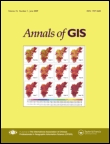
Annals of GIS
Exploring the Frontiers of Spatial ScienceWelcome to the Annals of GIS, a leading academic journal published by Taylor & Francis Ltd, dedicated to advancing the field of Geographic Information Science and its applications. With an ISSN of 1947-5683 and an E-ISSN of 1947-5691, this Open Access journal has been ensuring wide accessibility since 2019, thereby bolstering the dissemination of knowledge in areas such as remote sensing, spatial analysis, and geoinformatics. Hailing from the United Kingdom, the journal ranks impressively within its categories, achieving a Q2 status in Computer Science Applications and a prestigious Q1 ranking in Earth and Planetary Sciences for 2023, placing it in the top 10% among its peers. With a focus on innovative research spanning from 2009 to 2024, the Annals of GIS serves as a vital platform for researchers, professionals, and students alike, providing insights and fostering discussions that push the boundaries of geographic technologies and their real-world applications.
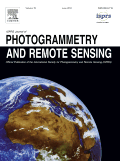
ISPRS JOURNAL OF PHOTOGRAMMETRY AND REMOTE SENSING
Elevating Knowledge in Photogrammetry and Remote SensingISPRS Journal of Photogrammetry and Remote Sensing is a prestigious publication at the forefront of the fields of photogrammetry and remote sensing. Established in 1989 and published by Elsevier, this journal has consistently maintained a strong academic standing, currently holding a top-tier Q1 ranking across multiple categories, including Atomic and Molecular Physics, Computer Science Applications, and Engineering. This reflects its vital contribution to advancing knowledge and technology in these dynamic fields. The journal is not only a vital resource for researchers and professionals but also serves as an essential academic platform for students keen on delving into the latest developments in geospatial sciences. The journal operates under a non-open access model, ensuring that submitted research adheres to the highest standards of scholarly communication and integrity. With an impactful focus, it brings innovative research, comprehensive reviews, and significant case studies to a global audience. The ISPRS Journal is crucial for those aiming to enhance their understanding and application of remote sensing techniques within various scientific disciplines.

Revista de Teledeteccion
Connecting researchers to real-world solutions.Revista de Teledeteccion, published by UNIV POLITECNICA VALENCIA, EDITORIAL UPV, is a leading Open Access journal dedicated to the interdisciplinary field of remote sensing and its applications. Since its inception in 2010, this journal has provided a vital platform for researchers, professionals, and students to disseminate groundbreaking findings, foster collaboration, and engage with contemporary challenges in Earth and Planetary Sciences as well as Geography, Planning, and Development. With a Q3 ranking in both fields as of 2023, it serves as an essential resource for advancing knowledge and innovative practices in hi-tech remote sensing methodologies. The journal covers a broad spectrum of topics, from satellite imaging techniques to environmental monitoring, making it an invaluable asset for those interested in harnessing remote sensing technologies to address real-world issues. The editorial office is located in Valencia, Spain, and the journal aims to bridge the gap between theoretical research and practical application, enriching the scientific community's understanding and capabilities in this dynamic domain.

JOURNAL OF GEODESY
Illuminating Earth’s Mysteries through Rigorous ResearchJOURNAL OF GEODESY, published by SPRINGER, is a premier academic journal dedicated to advancing the field of geodesy and its related disciplines. With an impact factor reflecting its high citation rate and rigorous peer-review process, this journal occupies a distinguished place in the academic community, categorized within the Q1 quartiles for Computers in Earth Sciences, Geochemistry and Petrology, and Geophysics as of 2023. The journal addresses various critical topics affecting our understanding of Earth’s shape, gravity field, and rotational dynamics, thus providing vital insights for researchers, professionals, and students alike. Derived from a legacy that spans from 1995 to 2024, the journal continues to publish significant contributions that foster growth in Earth and planetary sciences, with rankings that place it within the top tier of its categories: 10th in Geophysics, 13th in Geochemistry and Petrology, and 9th in Computers in Earth Sciences, all reflecting percentile rankings above 88%. Although Open Access options are not currently available, the journal remains an essential resource for advancing geodetic research across the globe. Explore the latest findings and connect with leading experts in the field through this highly regarded platform.
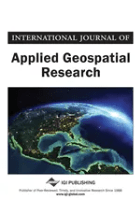
International Journal of Applied Geospatial Research
Driving insights in Earth and planetary sciences.International Journal of Applied Geospatial Research is an esteemed publication dedicated to advancing the field of geospatial research. Published by IGI Global, this journal provides a platform for innovative studies from 2010 to 2024 that encourage multidisciplinary contributions across Earth and planetary sciences and geography. While currently not offering open access, the journal's focus on applied research ensures that it remains highly relevant to both academics and industry professionals alike. With an ISSN of 1947-9654 and an E-ISSN of 1947-9662, it has been indexed in various databases, reflecting its emerging significance with rankings such as Q4 in Earth and Planetary Sciences and Geography according to Scopus, placing it at the intersection of critical research and practical application. Researchers, professionals, and students can expect insightful articles that enhance understanding and drive innovation in geospatial applications essential for informed decision-making in a rapidly changing world.
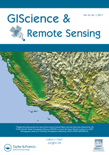
GIScience & Remote Sensing
Exploring Earth's Dynamics with Cutting-Edge TechnologyGIScience & Remote Sensing, published by Taylor & Francis Ltd, stands as a leading journal in the realm of Earth and Planetary Sciences, holding a prestigious Q1 ranking. Since its transition to Open Access in 2022, the journal has significantly broadened its reach, enabling researchers, professionals, and students across the globe to disseminate and access cutting-edge research related to geographic information science and remote sensing technologies. With a focus on publishing high-quality, peer-reviewed articles that contribute to the understanding of the Earth’s processes, environments, and interactions, this journal not only supports advancements in scientific knowledge but also fosters interdisciplinary collaboration. Based in the United Kingdom, GIScience & Remote Sensing continues to pave the way for innovative methodologies and applications, solidifying its vital role within the scientific community.

Acta Geodaetica et Geophysica
Connecting Disciplines for a Deeper Understanding of Our PlanetActa Geodaetica et Geophysica is a prestigious journal published by Springer, focusing on the interdisciplinary domains of geodesy, geology, and geophysics. With an ISSN of 2213-5812 and E-ISSN of 2213-5820, this journal serves as a vital resource for researchers, professionals, and students interested in building and construction, as well as the broader aspects of Earth and planetary sciences. Operating since 2013 and poised to continue until 2024, Acta Geodaetica et Geophysica has consistently maintained its relevance within the academic community, evidenced by its Q3 quartile ranking in the fields of Building and Construction, Geology, and Geophysics for 2023. The journal's Scopus ranks highlight its competitive standing, ranking 118 out of 321 in Geology, and 66 out of 165 in Geophysics, reflecting its impactful contributions to the field. Although this journal does not offer open access, it remains an essential publication that enriches ongoing research and promotes knowledge dissemination in Hungary and beyond. Researchers and academics seeking to advance their studies will find valuable insights and rigorous analyses within its pages, making it a cornerstone of contemporary geoscience literature.

Geo-Spatial Information Science
Advancing the Frontiers of Geo-Spatial ResearchGeo-Spatial Information Science, published by TAYLOR & FRANCIS LTD, is a premier open-access journal that has been at the forefront of disseminating cutting-edge research since its inception in 1998. With an ISSN of 1009-5020 and an E-ISSN of 1993-5153, this journal plays a pivotal role in the fields of Computers in Earth Sciences and Geography, Planning and Development, achieving a prestigious Q1 ranking in both categories as of 2023. Its exemplary Scopus rankings highlight its relevance within the social sciences and earth sciences, placing it among the top echelons of its field, with a 95th and 93rd percentile respectively. The journal aims to bridge the gap between innovative geospatial technologies and their applications in real-world scenarios, fostering interdisciplinary collaboration and advancing the global understanding of spatial data analysis. Based in the United Kingdom, Geo-Spatial Information Science invites researchers, professionals, and students to contribute and access research that shapes the future of geo-spatial sciences, all while adhering to open access principles that ensure broad dissemination and engagement with the broader academic community.

Geodetski List
Shaping the Future of Geodesy Through Research and ExchangeGeodetski List is a prestigious journal published by the Croatian Geodetic Society, focusing on the field of geodesy within Earth and Planetary Sciences. Since its inception, the journal has become a vital resource for researchers, professionals, and students who are keen to explore advancements and innovations in geodetic science. With a broad scope encompassing theoretical and applied aspects, Geodetski List provides a platform for disseminating research findings, case studies, and technical developments, facilitating knowledge exchange among geospatial experts. The journal has been indexed from 1979 to 1983, 1985, and from 2008 to 2024, maintaining a respectable standing within the academic community, as evidenced by its classification in the Q3 quartile for 2023. Although not open access, the journal represents an invaluable asset for its audience, aiding in the understanding of geodetic practices, methodologies, and technological advancements. Located in Zagreb, Croatia, it is dedicated to promoting robust scholarship in geodesy and its applications.
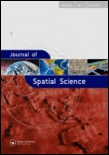
Journal of Spatial Science
Illuminating Connections in Atmospheric and Energy ResearchThe Journal of Spatial Science, published by Taylor & Francis Ltd, serves as a prominent platform for the dissemination of research in the interdisciplinary fields of geography, atmospheric science, and energy. With an ISSN of 1449-8596 and an E-ISSN of 1836-5655, this journal has established itself as a vital resource since its inception in 2004, boasting an impressive convergence period extending to 2024. Recognized in the Q3 quartile for Atmospheric Science and Energy (miscellaneous), and achieving a Q2 classification in Geography, Planning and Development in 2023, the journal not only reflects the evolving complexities of spatial science but also underscores its increasing relevance in addressing contemporary global challenges. The journal holds a commendable position in Scopus rankings, with notable placements in various categories, further highlighting its academic significance. Researchers, professionals, and students are encouraged to engage with the rich content offered, as the Journal of Spatial Science remains committed to advancing knowledge and fostering discussions pertinent to spatial analysis and its applications.